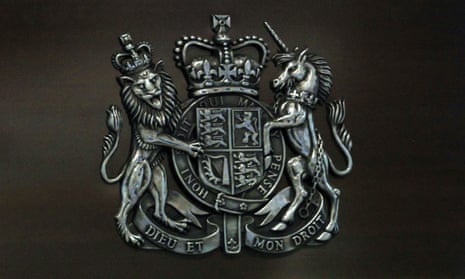A Victorian judge has banned a woman whose husband is facing terrorism charges from wearing a niqab in court, saying it posed a potential security risk.
The woman applied through her husband’s lawyers to wear the face veil, which she said was a “a fundamental way in which she observes her faith”, while sitting in the public gallery to support him through the six-week trial.
She said she had been permitted to wear the niqab during a committal hearing in the magistrates court and was willing to show her face to security guards manning the metal detector and weapons check at the court entrance to verify her identity.
But the supreme court judge Christopher Beale said the risk of a mistrial or other incident caused by “misbehaving” in the public gallery would be heightened if a person could not be instantly identified because their face was covered, and ruled that the risk outweighed the infringement upon the woman’s right to freedom of religious expression.
“Deterrence, identification and proof are all served by a requirement that spectators in the public gallery have their faces uncovered,” he said in a decision handed down on Monday.
Beale said lawyers for the accused had indicated there were other women who would also wear niqabs in court if permission were granted, which would further confuse identity issues because “such dress tends to be very similar”.
Lawyers for the woman argued that she did not pose a security risk and would abide by all court orders, but Beale said the stress felt by people accused of serious crimes was often shared by family members and that “as a consequence of that stress, incidents happen from time to time in court”.
“Australia is obviously a multicultural society and I agree that religious dress should be accommodated as much as possible, but the right of religious freedom and the right to participate in public life are not absolutes,” Beale said in his decision.
He said the Victorian charter of human rights recognised that rights “may be subject to limitations which can be ‘demonstrably justified in a free and democratic society based on human dignity, equality and freedom’”.
Lawyers for the woman said there was an implied right of wear a veil when not giving evidence, citing a number of cases in Commonwealth countries.
Those cases generally concerned whether a person was able to wear religious facial coverings while giving evidence and did not contest a person’s right to wear religious attire when not on the stand. Among them is a ruling by the New South Wales court of appeal concerning a civil damages trial against NSW police, which upheld the trial judge’s ruling that the complainant could not wear her niqab while giving evidence.
“A requirement that spectators have their faces uncovered is not to force anyone to act immodestly,” Beale said. “First, the exposure of one’s face in a courtroom cannot reasonably be viewed as an immodest act: subjective views to the contrary cannot rule the day, or the management of a courtroom.
“Second, if someone feels strongly that it would be improper for them to uncover their face in court, they can choose not to attend.”
He said the trial could be livestreamed to another room in the court building to allow the woman to follow it if she chose not to remove her veil.
The Victorian equal opportunity and human rights commissioner, Kristen Hilton, said religious and cultural rights were protected under Victorian law, and that those rights also applied in a courtroom.
“Victorian law is clear that when courts are acting in an administrative way – such as making decisions about procedure in the courtroom – they must consider and act compatibly with human rights,” Hilton said.
“The law allows for restrictions on human rights, such as restricting a person’s right to observe their religion or culture through what they wear, but limits are only justified where there is clear evidence the limit is reasonable.”
